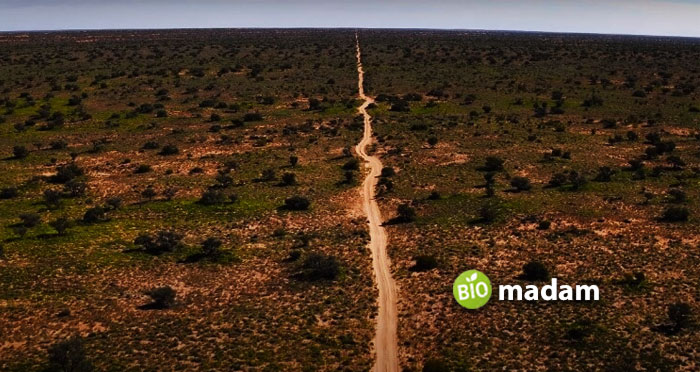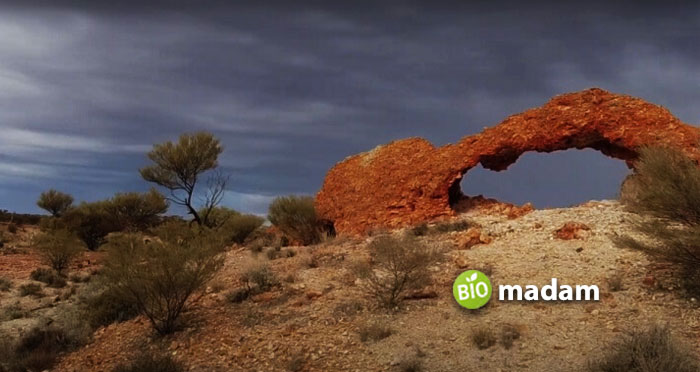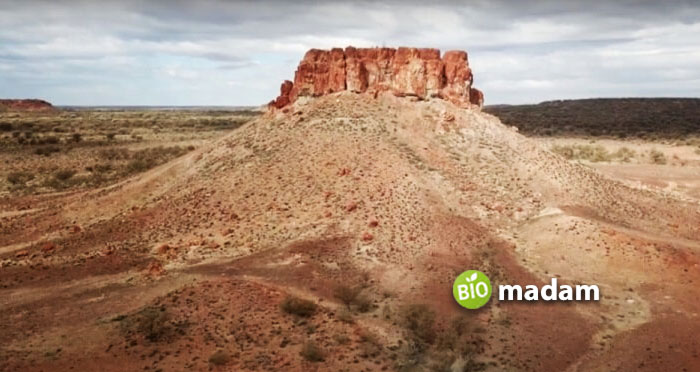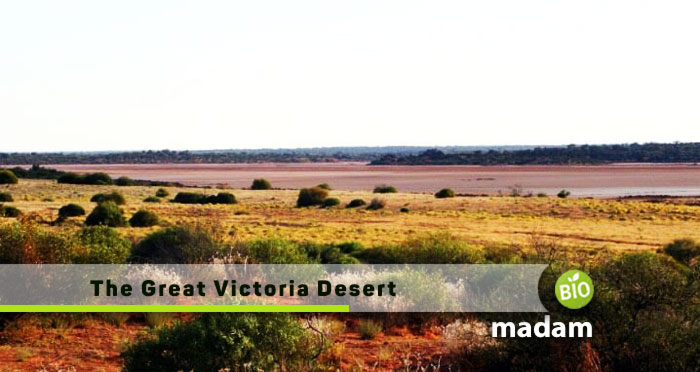Spanning over a vast area in Western Australia and South Australia, the Great Victoria Desert is one of the top largest deserts in the country. Despite its harsh and unforgiving climate, this arid expanse contains a surprising diversity of plant and animal life that has adapted to survive in the extreme conditions. The desert is home to a variety of unique flora such as spinifex, mulga, and mallee scrub, which provide habitat for animals like lizards, snakes, and small marsupials.
Although largely uninhabited by humans, the Great Victoria Desert Nature Reserve holds a wealth of Aboriginal history and culture, with sacred sites and rock art scattered throughout. This expansive wilderness contains natural wonders waiting to be explored.
This article will highlight some of the most fascinating aspects of this iconic Australian outback environment, from its breathtaking landscapes to its resilient inhabitants. The Great Victoria Desert never ceases to amaze.
Where is the Great Victoria Desert?
The Great Victoria Desert, Australia’s largest desert and the eighth largest in the world is situated in the central and western regions of Australia. Covering an expansive area of approximately 422,466 square kilometers (163,115.035 square miles), this arid landscape spans across two Australian states: South Australia and Western Australia. The desert extends from the central to the western part of the continent, presenting a vast and remote expanse of arid land that captivates adventurers, scientists, and travelers alike.

Geography and Size
The Great Victoria Desert’s geography is characterized by vast stretches of arid land, sandy dunes, grasslands, and salt lakes. Dominated by open woodlands, including vegetation such as eucalyptus mulga, hummock grass understorey, and various shrubs, the desert showcases a unique and diverse topography. It is renowned for its immense size, making it the largest desert in Australia and a prominent feature in the southern rangelands of Western Australia.
The sheer magnitude of the desert, extending over 700 kilometers from west to east, contributes to its status as a UNESCO Biosphere Reserve. The Great Victoria Desert location, marked by its expansiveness and remoteness, adds to its allure as a pristine and untouched natural landscape.
Climate and Weather
Characterized by abiotic conditions, the Great Victoria Desert climate and weather shape its unique ecosystems. With low rainfall and high temperatures, the environment experiences extreme fluctuations. Annual precipitation averages between 200 to 250 millimeters, contributing to the scarcity of water resources. Summer temperatures frequently soar to 40 degrees Celsius, creating an environment of intense sunlight, rapid evaporation, and extremely dry air.
How Was the Great Victoria Desert Formed?
The formation of the Great Victoria Desert is a result of geological and climatic processes that have shaped the Australian continent over millions of years. Here is an overview of the key factors contributing to the formation of the Great Victoria Desert:
- Tectonic Activity: The Australian continent has been influenced by tectonic movements over geological time scales. The gradual drifting of the Australian tectonic plate and its interactions with neighboring plates played a role in shaping the landscape.
- Erosion and Uplift: The desert’s topography has been shaped by processes of erosion and uplift. Various geological forces, including wind and water erosion, as well as tectonic uplift, have contributed to the creation of distinct landforms within the Great Victoria Desert.
- Climate Changes: Changes in climate over epochs have significantly influenced the desert’s formation. Australia, as a continent, has experienced fluctuations in climate, with periods of aridity leading to the development of extensive arid regions.
- Regularity of Rainfall: The Great Victoria Desert is characterized by low and unpredictable rainfall. The arid climate, with an annual precipitation ranging from 200 to 250 millimeters (8 to 10 inches), has limited the growth of vegetation and contributed to the arid nature of the landscape.
- Evolution of Flora and Fauna: The flora and fauna within the Great Victoria Desert have adapted to the challenging environment shaped by arid conditions. The evolution of specific plant and animal species, such as spinifex grass, acacia shrubs, and various desert-adapted animals, reflects the long-term influence of climatic factors.
- Sand Dunes and Salt Lakes: The desert’s topographical features, including extensive sand dunes and salt lakes, are a result of aeolian processes (wind-related) and variations in salt deposition. These features contribute to the unique and visually striking landscapes within the Great Victoria Desert.
- Human Impact: While natural processes played a significant role in the desert’s formation, human activities, such as Indigenous land management practices, have also contributed to shaping the landscape over thousands of years.
Flora and Fauna
Contrary to expectations, the Great Victoria Desert hosts a diverse range of plant and animal species, each uniquely adapted to survive in this challenging environment.
What Plants Reside in the Great Victoria Desert?
Spinifex grass, acacia shrubs, and eucalyptus trees dominate the vegetation. Spinifex grass, with its deep roots, forms dense hummocks providing an essential habitat for small animals and reptiles. Acacia shrubs, known as wattles, showcase adaptability to arid conditions, while eucalyptus trees thrive along watercourses, supporting native bird and animal species.
What Animals Live in the Great Victoria Desert?
You’ll come across a variety of animals in the Great Victoria Desert as it is home to different lizard species, including the at-risk great desert skink and the Central Ranges taipan. Marsupials like the sandhill dunnart and the crest-tailed mulgara have adapted to the challenging terrain. Some species, like the southern marsupial mole and the water-holding frog, employ sand-digging strategies for survival. Predators include dingoes, perenties, and the formidable sand goanna. The avian population features unique species such as the chestnut-breasted whiteface and the malleefowl.
Threatened Species
Several species in the Great Victoria Desert face endangerment, including the sandhill dunnart, southern marsupial mole, malleefowl, great desert skink, rock wallabies, and bilbies. The delicate balance of this ecosystem requires concerted conservation efforts.

Indigenous People and Culture
The Great Victoria Desert is the traditional home of indigenous groups such as the Pitjantjatjara, Yankunytjatjara, and Ngaanyatjarra peoples. With a history spanning thousands of years, these communities maintain a profound connection to the land. Traditional practices, including hunting, gathering, and controlled fire use for land management, have shaped both the landscape and the indigenous way of life. The rich cultural heritage, expressed through stories, ceremonies, and art, reflects a deep connection to the desert’s natural processes.
Conservation and Environmental Issues
Preserving the delicate balance of the Great Victoria Desert is crucial for its biodiversity, cultural heritage, and natural resources. Protected areas, such as the Mamungari Conservation Park and Great Victoria Desert Nature Reserve, aim to safeguard flora, fauna, and indigenous cultural practices. Environmental challenges, including invasive species like rabbits, camels, and feral cats, pose a threat to the ecosystem. Additionally, climate change impacts, such as rising temperatures and shifting rainfall patterns, demand attention for the long-term sustainability of this unique landscape.
Tourism and Recreation – Explore the Great Desert
For those seeking adventure and an immersive experience, the Great Victoria Desert offers a range of outdoor activities. 4WD tours, guided by experienced drivers, provide access to remote areas. Hiking allows exploration of diverse landscapes, from sand dunes to rocky outcrops. Aboriginal cultural experiences provide insights into traditional knowledge and practices. Notable attractions, including the Anne Beadell Highway, Neale Junction, and the Serpentine Lakes, showcase the diverse and captivating features of the desert.
Additionally, visitors have a plethora of activities to indulge in within the Great Victoria Desert:
- Travel Routes: Drive the 1,325-kilometer Anne Beadell Highway from east to west, visiting Kirgella Rocks, Queen Victoria Springs, and Plumridge Lakes Nature Reserve.
- Exploration: Hike around the Kirgella Rocks for a closer experience of the desert’s unique features.
- Recreation: Engage in thrilling activities such as sandboarding, ATV riding, or horseback riding to add an adventurous touch to your visit.
- Aerial Perspective: Experience the breathtaking landscape from above through activities like hang gliding, providing a unique vantage point of the desert’s vastness.
Tour operators offer multi-day tour packages, catering to diverse preferences. To make the most of your visit, allocate at least four days for the tour. Given the vastness of the land and the myriad of activities and sites, a weekend trip might not suffice. Camping and motorbike tours emerge as popular choices among nature enthusiasts.
The top 3 recommended activities include ATV riding, hiking, and horseback riding. The best time to travel is in January when the average daily temperature is 95 degrees Fahrenheit, offering warm conditions. In contrast, July is considered the least favorable month due to freezing temperatures during the winter months.

Victoria Desert Trip Guide
As with any trip, it’s important to pack appropriately for the climate and activities you’ll be doing. Here are some tips on what to bring:
- Clothing: The Great Victoria Desert can get very hot during the day and cold at night, so it’s important to pack clothing that can accommodate both extremes. Lightweight, breathable clothing is best for the daytime, while warm layers are necessary for cooler nights. Don’t forget a hat and sunglasses to protect yourself from the sun.
- Footwear: Comfortable, sturdy shoes are a must for exploring the desert. Hiking boots or sneakers with good traction are recommended.
- Water: It’s essential to stay hydrated in the desert, so bring plenty of water with you. A reusable water bottle is a great option to reduce waste.
- Sunscreen and Insect Repellent: Protect your skin from the harsh sun and pesky bugs with sunscreen and insect repellent.
- First Aid Kit: It’s always a good idea to have a basic first aid kit on hand in case of any accidents or injuries.
- Navigation Tools: The Great Victoria Desert is vast and can be easy to get lost in, so bring a map, compass, or GPS device to help you navigate.
- Camping Gear: If you plan on camping in the desert, make sure to bring a sturdy tent, sleeping bag, and camping stove.
By packing these essentials, you’ll be well-prepared for a safe and enjoyable trip to the Great Victoria Desert. Remember to always respect the environment and follow Leave No Trace principles to help preserve this unique natural wonder for future generations.
Final Thoughts
The Great Victoria Desert represents one of the last great wildernesses on the planet. This vast and remote landscape contains a diversity of natural wonders for those willing to venture into its depths. While its harsh climate and isolation present challenges, the rewards come in the form of stunning vistas, unique wildlife encounters, and the humbling experience of Australia’s expansive outback.
For the intrepid traveler, a journey through the Great Victoria Desert promises adventure, insight into indigenous culture, and an appreciation for the resilient lifeforms that endure in this iconic desert environment. Though arid and extreme, the beauty and fascination of this desert will continue to draw travelers to unlock its mysteries and embrace its extremes.
FAQs
Who is the Great Victoria Desert named after?
The Great Victoria Desert earned its name from British explorer Ernest Giles, who embarked on an expedition in 1875 and named the desert in honor of Queen Victoria, the reigning monarch at the time. This vast arid landscape, stretching across South Australia and Western Australia, stands as a testament to the historical exploration of the Australian continent.
Is Uluru in the Great Victoria Desert?
No, Uluru, also known as Ayers Rock, is not situated in the Great Victoria Desert. Uluru is located in the Northern Territory of Australia, specifically in Uluru-Kata Tjuta National Park. The Great Victoria Desert, although expansive and captivating, is geographically distinct, spanning across parts of South Australia and Western Australia.
How old is the Great Victoria Desert?
Determining the exact age of the Great Victoria Desert is challenging due to its gradual formation over millions of years through geological and climatic processes. However, indigenous communities like the Pila Nguru people have a history of approximately 25,000 years in the region, showcasing the enduring connection between humans and this ancient Australian landscape. Explore the wonders of the Great Victoria Desert with our comprehensive guide. Discover its geography, climate, flora, fauna, and more.

As a freelance journalist, copywriter, and editor, Rachel Truman crafts compelling stories across travel, food, family, lifestyle, and B2B. With a keen eye for detail, Rachel specializes in creating engaging branded content, making every word an adventure

